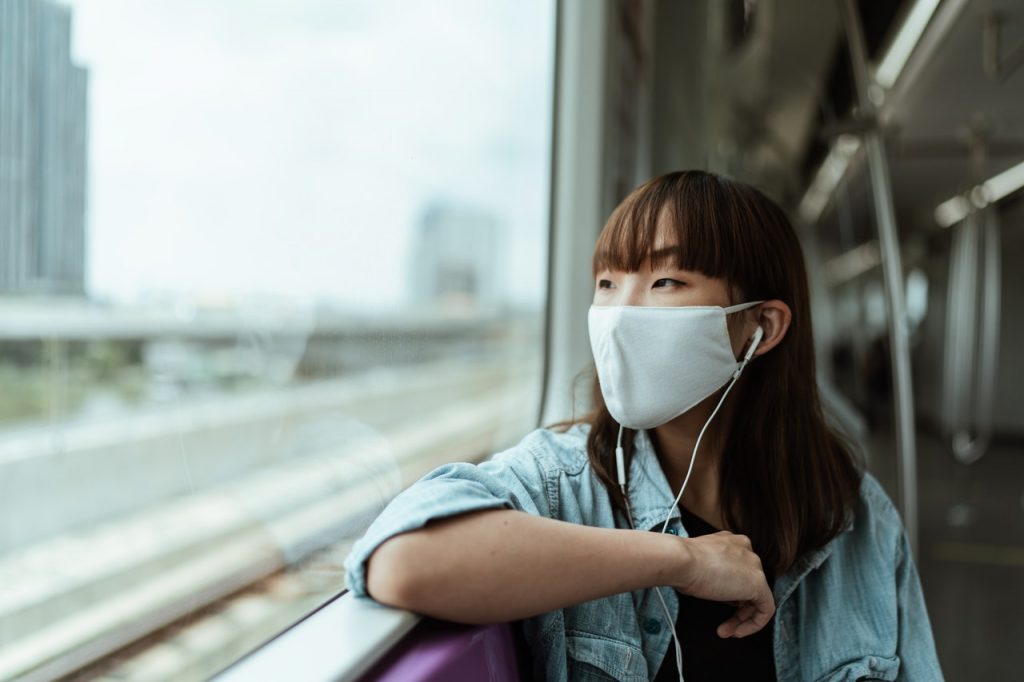In the face of a public health crisis, many individuals and organizations have been making drastic changes to their safety protocols, especially when it comes to social distancing and having the right “safety” equipment that can help mitigate the transmission of COVID-19. Since last year, many governments around the world have been implementing strict usage of face masks, breathable masks, and sometimes even face shields. According to research and studies, this personal protective equipment has significantly lowered the risk of transmission for many individuals. However, many of these studies only cover the use of widely-used face masks.
In the first half of the pandemic, many authorities have been telling people to wear face masks together with face shields. Theoretically, the COVID-19 virus travels through virulent water particles suspended in the air when people cough or sneeze. The face can “effectively” protect almost any orifice in the head, such as the eyes, nose, and mouth, from infection.
Are Face Shields and Masks with Valves Effective?
However, many people doubt the necessity of having face shields, and many would say that it’s generally not needed when face masks are enough in this situation. Actually, there is a bit of truth in this situation. In a recently published study in the journal of Physics of Fluids regarding face shields, a visualization has shown that many of these face shields provide little to no protection against the spread of coronavirus.
In other studies, masks with valves are also considered ineffective, especially to individuals within proximity to the wearer. It’s also important to note that each type of brand, when it comes to masks, will have varying degrees of leakage.
N-95 Masks and Masked Valves
Next, we’ll need to discuss the use of N-95 masks and other types of masks that might have valves. First, we’ll need to discuss the mode of infection. As most of us know, COVID-19 will usually infect through the form of droplets. Visualizations have suggested that these droplets will change aspect through gaps in the mask. Alarmingly, many of these droplets are being redirected downwards, which can spread towards following and a wider area.
There have been experiments where mannequins are forced to wear N-95 masks that don’t have exhalation valves. The experiment concluded that after couping, many of these droplets then escaped through the gaps and cracks within the mask. But most researchers have also concluded that the extent of being exposed is much lower compared to those that are wearing face masks that do have valves.
The Centers for Disease Control and Prevention do not recommend masks that do have valves. While it does provide better protection towards the wearer, it can compromise individuals around the person, especially if the person wearing is infected. If you’re looking for masks that can help with respiratory illnesses, you might want to consider looking at a list of masks that are approved by the CDC.

Usage in Other Industries
It’s important to note that even though these types of masks aren’t recommended for use when it comes to being in crowded areas or high-risk situations, they are still known for being useful in different industries and applications. Industrial facilities, manufacturing plants, and construction yards will need to use these valved masks since there is a lot of dust and particles that are suspended in the air.
Many of these dust and particles can cause respiratory complications. However, many of the workers in these industrial facilities will also need to take into account the transmission of COVID-19, even if they are wearing valved masks. Fortunately, high-quality disposable masks for construction workers can mitigate health problems in construction sites. Not only do these personal protective equipment help mitigate respiratory issues and problems, but they are also known for minimizing the likelihood of injuries. After all, safety should always be the priority in this situation.
Based on findings, the advantages of wearing a face shield are quite minute. Still, most authorities and organizations would suggest having at least a face mask to reduce the spread of the virus. Remember: most face masks are designed to absorb droplets, which can help stop transmissions in their tracks. Plastic face shields and valved masks do not absorb these droplets. This is one of the reasons why individuals should thoroughly clean their masks after using.
If you’re planning on cleaning your face masks, you can always use alcohol wipes or rinse them with alcohol and water. If you’re in doubt that the mask can protect you since it’s been damaged, you can always replace it.
